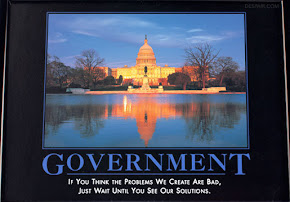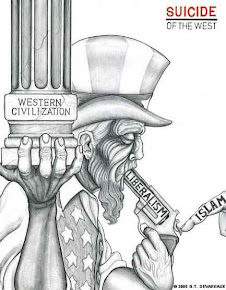Friday, August 26, 2011
Why The Poor Need The Marketplace
One of the reasons that those below the poverty level have so many "things", is that the poverty level is measured before any governmental assistance. Look at your own income and imagine how much you spend for food (no food stamps), medical insurance, co-pays and deductibles (no medicaid or other free care), housing (no public housing), cell phones (no Federal subsidies), taxes (no taxes). That $20,000 of poverty level disposable income isn't looking so bad anymore, is it?
Excerpt: The political left is convinced that certain goods and services — especially health care and education — should be provided free of charge by the government rather than sold in the marketplace (see Uwe Reinhardt, for example).
The reason: in the marketplace distribution will be determined by ability to pay and poor people, by definition, are least able to pay. Only free provision by the state can result in equal access for all.
The left, by the way, has largely won this debate. About 90% of schoolchildren attend public schools. And most people who are poor or near poor can enroll in Medicaid or the State Children’s Health Insurance Program (SCHIP) or take advantage of free care at community health centers and the emergency rooms of safety net hospitals. On the other hand, most other goods and services have been left to the marketplace.
So what has been the result of this grand experiment? If left wing political theory is true, we should expect to see huge inequalities in the ownership of goods sold in the market, but fairly equal consumption in health care and education. But there’s the irony. The exact opposite of this prediction has been borne out!
More than 30 million Americans are living in “poverty,” according to the U.S. Census Bureau. That’s one out of every seven people. But what does it really mean to be “poor” in America?
A Heritage Foundation report by Robert Rector and Rachel Sheffield finds there is more here than initially meets the eye. To most Americans, the word “poverty” implies significant material deprivation, including inadequate food, clothing and shelter. The actual living conditions of America’s poor are very different, however. According to the government’s own survey data, in 2005:
The average household defined as poor lived in a house or apartment equipped with air conditioning and cable TV.
The family had a car (a third of the poor have two or more cars).
For entertainment, the household had two color televisions, a DVD player and a VCR.
If there were children in the home (especially boys), the family had a game system, such as an Xbox or PlayStation.
In the kitchen, the household had a microwave, refrigerator, and an oven and stove.
Other household conveniences included a clothes washer, clothes dryer, ceiling fans, a cordless phone and a coffeemaker.
The home of the average poor family was in good repair and not overcrowded. In fact, the typical poor American had more living space than the average (non-poor) European, the Heritage scholars note. When asked, most poor families stated they had had sufficient funds during the past year to meet all essential needs.
Liberal blogger Matt Yglesias says the Heritage report leaves out three things: housing, education and health care.
Over the past 50 years, televisions have gotten a lot cheaper… Consequently, even a low-income person can reliably obtain a level of television-based entertainment that would blow the mind of a millionaire from 1961. At the same time, if you’re looking to live in a safe neighborhood with good public schools in a metropolitan area with decent job opportunities you’re going to find that this is quite expensive. Health care has become incredibly expensive.
But what do these three sectors have in common that’s missing from the market for television sets and video games? Government.
Read the full NCPA article here.
Excerpt: The political left is convinced that certain goods and services — especially health care and education — should be provided free of charge by the government rather than sold in the marketplace (see Uwe Reinhardt, for example).
The reason: in the marketplace distribution will be determined by ability to pay and poor people, by definition, are least able to pay. Only free provision by the state can result in equal access for all.
The left, by the way, has largely won this debate. About 90% of schoolchildren attend public schools. And most people who are poor or near poor can enroll in Medicaid or the State Children’s Health Insurance Program (SCHIP) or take advantage of free care at community health centers and the emergency rooms of safety net hospitals. On the other hand, most other goods and services have been left to the marketplace.
So what has been the result of this grand experiment? If left wing political theory is true, we should expect to see huge inequalities in the ownership of goods sold in the market, but fairly equal consumption in health care and education. But there’s the irony. The exact opposite of this prediction has been borne out!
More than 30 million Americans are living in “poverty,” according to the U.S. Census Bureau. That’s one out of every seven people. But what does it really mean to be “poor” in America?
A Heritage Foundation report by Robert Rector and Rachel Sheffield finds there is more here than initially meets the eye. To most Americans, the word “poverty” implies significant material deprivation, including inadequate food, clothing and shelter. The actual living conditions of America’s poor are very different, however. According to the government’s own survey data, in 2005:
The average household defined as poor lived in a house or apartment equipped with air conditioning and cable TV.
The family had a car (a third of the poor have two or more cars).
For entertainment, the household had two color televisions, a DVD player and a VCR.
If there were children in the home (especially boys), the family had a game system, such as an Xbox or PlayStation.
In the kitchen, the household had a microwave, refrigerator, and an oven and stove.
Other household conveniences included a clothes washer, clothes dryer, ceiling fans, a cordless phone and a coffeemaker.
The home of the average poor family was in good repair and not overcrowded. In fact, the typical poor American had more living space than the average (non-poor) European, the Heritage scholars note. When asked, most poor families stated they had had sufficient funds during the past year to meet all essential needs.
Liberal blogger Matt Yglesias says the Heritage report leaves out three things: housing, education and health care.
Over the past 50 years, televisions have gotten a lot cheaper… Consequently, even a low-income person can reliably obtain a level of television-based entertainment that would blow the mind of a millionaire from 1961. At the same time, if you’re looking to live in a safe neighborhood with good public schools in a metropolitan area with decent job opportunities you’re going to find that this is quite expensive. Health care has become incredibly expensive.
But what do these three sectors have in common that’s missing from the market for television sets and video games? Government.
Read the full NCPA article here.
Labels:
Big Government,
education,
Poverty
Subscribe to:
Post Comments (Atom)






























No comments:
Post a Comment